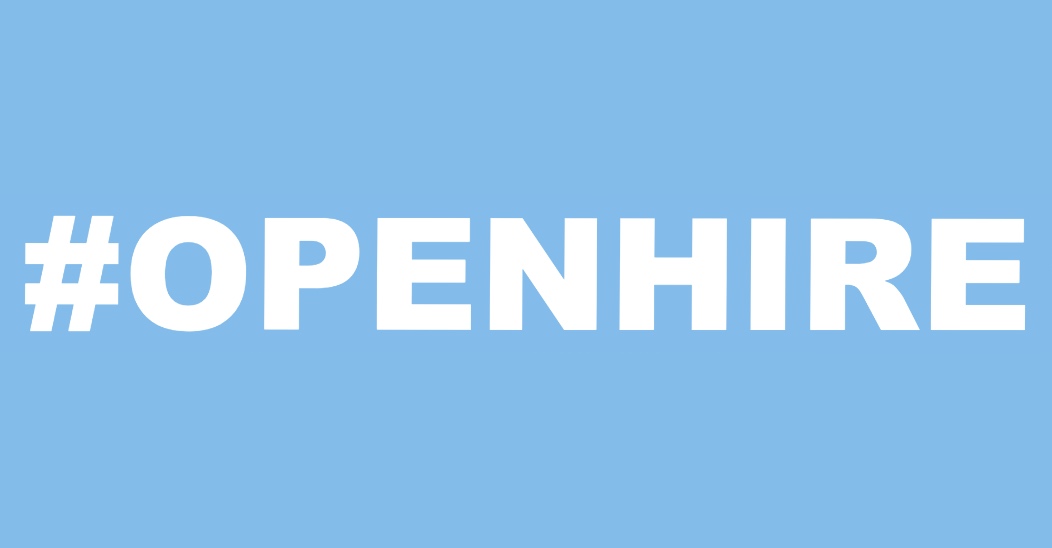#OPENHIRE – FAQ
You absolutely can. We’re just encouraging decision makers to ask themselves whether they’re questioning their own bias when they hire. For example, if you’re worried about the size of the pool you’re selecting from, or find that you keep hiring people like yourself, in other words if you have any doubts about your own unconscious bias – then OpenHire is here for you.
Creative relationships are important and fundamental to how we work as freelancers. However they can also exclude people who are too often excluded. So if you fail to find a candidate through the OpenHire process that can compete with a long time collaborator, then that collaborator is likely the best person for the job, and so be it.
OpenHire has partly been developed as a response to the problem of coverage. It is impossible, given the constraints of the modern AD job and the size of the talent pool, for Artistic Directors to see everyone’s work. As a result they end up seeing the work of people they know (for directors, previous assistants feature heavily). This has been attested to by many Artistic Directors we have spoken with. There are also significant costs involved in mounting a production which unfairly limits the pool of potential applicants. We wish that everybody had the opportunity to make work, and that work could be seen by every decision maker, and that they could be judged on that alone. However to maintain that this is possible industry-wide, is a fantasy. We need to find another way of assessing talent that is more flexible and convenient for decision makers and freelancers. This may involve taking a calculated risk. That is how every employer / employee relationship works.
Unfortunately, a large amount of unpaid work is already being done by freelancers, but for jobs that may not exist. When an AD invites a freelance director, for example, to meet for a coffee, that director will typically work up three to five pitches and then try to steer the conversation round to them. However, the AD’s season may be full, or they might only be able to offer a fee the director can’t afford to take, or the AD might have only booked the coffee as a general ‘introduction’ and not want pitches etc, etc. We do not pretend to have a labour-free method of putting freelancers up for jobs. However with the OpenHire system when a freelancer puts the work in they are assured that there is a job, they know the fee, and what is required – the freelancer can then make a decision on whether to apply or not.
It can do, but it doesn’t have to. The guidelines are created with the intention of being flexible. For example, you could ask candidates to submit only a CV and a one-page cover letter, shortlist only 3 candidates for a meeting, and hire them within the week if you wanted. Or alternatively you could commit to meeting every candidate for 10 minutes, conducting several rounds of interviews, including presentations, etc. We are only encouraging employers to use a process, whether that’s long, short or strangely shaped.
Stating dates is not part of the requirement for OpenHire for precisely this reason. We know that seasons are in constant flux right up to rehearsals starting. For example, you might put a call out for a designer/director pairing for a show with a certain fee, which might not then happen for 18 months or more.
We have spoken to many people with much more experience of hiring freelancers than we have. Short of seeing multiple productions of somebody’s work, our research suggests that the most equitable method is a 10 minute face to face meeting with each candidate. However, we appreciate this is resource-heavy for all concerned. Hence, we do not recommend one particular process. The barriers experienced by people due to disability, neurodiversity, class, race, gender, caring responsibilities and privilege should all be considered when devising a process.
Collecting Equal Opps data is much simpler than you might think. It’s a matter of creating a Google form that takes about 5-6 minutes, (we timed it with a stop watch. We really did.). Send the link to your form out with the job brief, candidates can fill it in anonymously, and it is totally separate from their application. More info on how to make an Equal Opps form can be found here.
The problem is much bigger, but we have decided to fight a battle rather than try to win the war. Our goal is to make things a bit better. We believe this is a (relatively) small change for decision-makers, that could have a large beneficial effect for freelancers. It is not the only solution, but perhaps can be part of wider changes that are needed in the industry. After all, if you see an opportunity for change that is achievable, practical and appeals to both sides then it makes sense to do that first, before moving on to the next thing.
